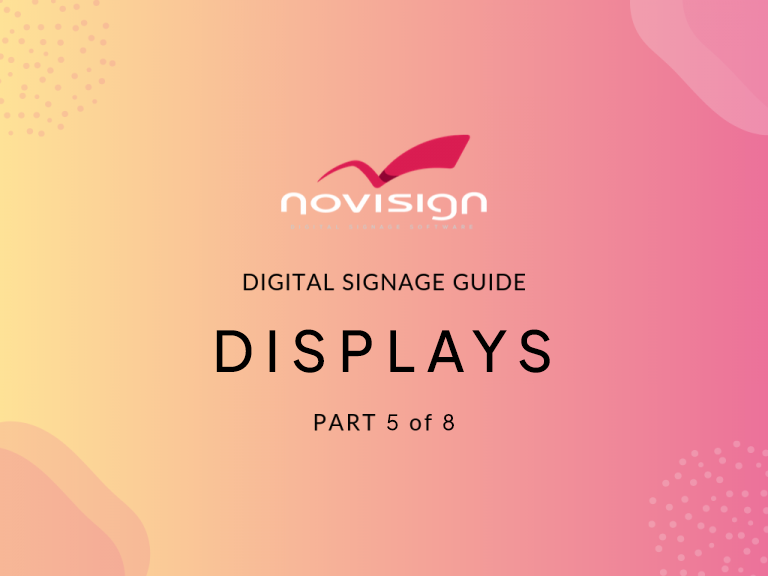 With so many digital signage display manufactures that all feature similar hardware specifications, it is hard to know what digital signage display to choose for you.
With so many digital signage display manufactures that all feature similar hardware specifications, it is hard to know what digital signage display to choose for you.
Commercial Grade Digital Signs vs. TVs
The key thing that you need to understand is what is the difference between TVs vs. commercial-grade TVs aka digital signs.
TVs that are purchased from Walmart, BestBuy and Target are consumer grade and rated for no more than 8 of continuous usage.
Commercial-grade displays are specially designed for continuous usage. They feature heat dissipation metal enclosures and cooling fans that allow for the displays to be used at a minimum of 16 to 24 hours a day.
Burn-In
A primary separating factor is burn-in. With TVs, you run the risk of images being burnt into the screen if they are displayed on the screen for an extended period without changing. With a commercial-grade digital sign, the burn-in will not occur.
To avoid image burn-in with regular TVs, it is suggested that the media being displayed rotates every several hours.
Brightness
The better your content looks, the more eyeballs it will grab! If the display features a high-brightness panel (NIT) your content will be easier to see and pop-out.
Regular TVs on average feature 300 NITs and commercial-grade digital signs start at 450 NITs.
Longevity
The longer your display lasts the longer it will take for having to replace. When it comes to the rated life-cycles of TVs, you are looking at an average of 15,000 hours of use. Commercial-grade displays are rated for 50,000 hours. This is 3X longer than regular TVs.
Warranty
Commercial-grade displays come with on average a 3-year warranty and many times offer an advanced exchange or onsite repair programs. The repair programs will significantly help you with getting prompt service and replacement screens.
With TVs, the warranty is 12-months and they do not cover commercial use.
Tamper Proof
Another visible difference between TVs vs. commercial-grade digital signs is the power buttons and control panel.
Having the control panel accessible could create a potential issue if the public walks up to the TV and hits the power-button or changes the input.
With TVs, the control panel is accessible.
With a commercial-grade digital sign, the control panel is not accessible. This prevents the public from tampering with the display.
Pricing
And finally, cost. Nowadays you can get a 55″ 4K TV from Wal-Mart for $300 on sale. A 55″ 4K commercial-grade digital sign sells for approximately $800. When doing a pricing analysis, the overall getting started costs are significantly lower with TVs vs. commercial-grade digital signs.
From a replacement standpoint, let’s say you have to replace the TV at the end of the 2nd year. This put your out of pocket total at $600 for two 55″ 4K TVs vs. one 55″ 4K commercial-grade digital sign.
Conclusion
Based on the pricing comparison, TVs do make better sense, BUT one key thing to consider is security. If you’re looking to deploy many screens in public environments, then going with commercial-grade digital signs would be the smart decision. Not having the control panel accessible would save you significant time when it comes to having to check the displays for being on, etc.

 With so many
With so many